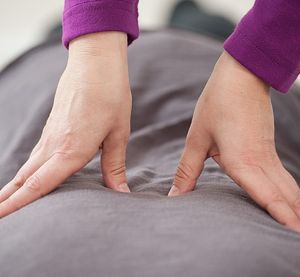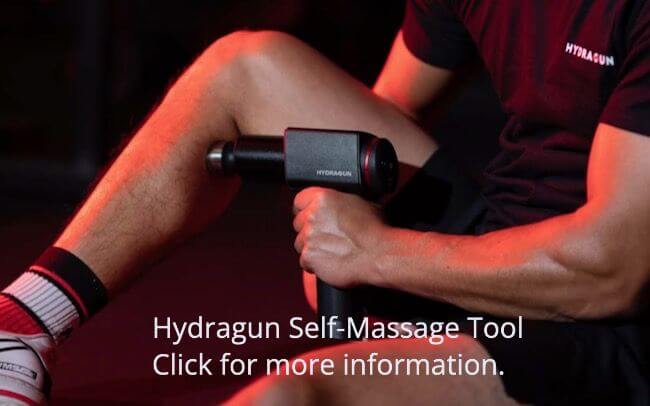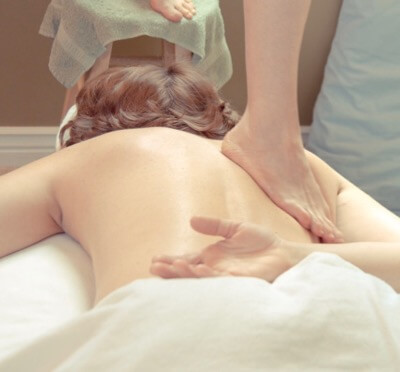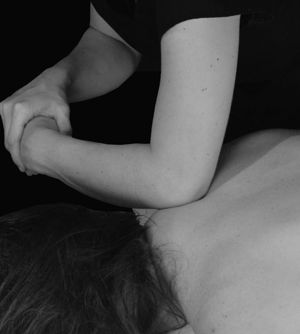- Home
- Massage Types
- Shiatsu Massage Therapy
As an Amazon Associate and affiliate with other programs, I may earn revenue from qualifying purchases through affiliate links. This does not affect the price you pay. Privacy Policy / Disclosures. This site is for educational purposes only.
What Is Shiatsu Massage Therapy?
Although you will hear the term shiatsu massage therapy, technically,
shiatsu isn't massage but a Japanese energy technique based on the
theories of traditional Asian medicine.
The technique involves
applying pressure to specific points on your body to stimulate the flow
of energy and improve circulation. Practitioners use their thumbs,
fingers, and palms—some styles of shiatsu also use elbows, forearms,
knees, and feet—along energy lines (meridians) and on specific points in
the muscles and other soft tissues. The focus varies depending on the
style.
Traditionally, shiatsu begins with a Chinese-style assessment that includes pulse and tongue analysis. Not all modern practitioners include this assessment.
History of Shiatsu
Although based on ancient theories of Chinese medicine and acupressure, shiatsu as a distinct form of bodywork didn't develop in Japan until the early 1900s.
In 1915, Tamai Tempaku published the book Shiatsu Ryoho ("finger pressure way of healing"), followed by Shiatsu Ho ("finger pressure method") in 1919. The books combined Anma (Japanese massage), Ampuku (abdominal massage), and Do-In (therapeutic exercises) with Western anatomy and physiology.
Tempaku's student, Tokujiro Namikoshi, continued the development of this bodywork and opened the first school, the Shiatsu Institute of Therapy, in the 1930s. Tokujiro and his son, Toru Namikoshi, developed shiatsu based on Western principles of anatomy and physiology, including applying pressure to neuromuscular points (rather than focusing on meridians). This form of of shiatsu is still the most-practiced form in Japan. For more information, see Toru Namikoshi's shiatsu book.
The U.S. military forces that occupied Japan after World War II temporarily banned the practice of shiatsu massage therapy. After President Truman lifted the ban, the practice branched out into many forms and soon arrived in the United States. Generally, all forms of shiatsu evolved from three styles: Namikoshi shiatsu, Shiatsu Anma, and Zen Shiatsu.
Types of Shiatsu
The American Organization of Bodywork Therapies of Asia (AOBTA) currently recognizes six styles of shiatsu, but that doesn't mean other forms aren't valid. The six are:
- Japanese Shiatsu is somewhat vaguely defined by the AOBTA as "primarily pressure, usually applied with the thumbs along the meridian lines, [but may include] extensive soft tissue manipulation and both active and passive exercise and stretching." It's likely that the AOBTA includes Namikoshi-style shiatsu in this category.
- Five Element Shiatsu uses assessment techniques to identify patterns of disharmony in a client and bases point selection on these patterns. According to five element theory, each person has a strong affinity with one of the five elements: wood, water, fire, earth, or metal. Disharmony among the elements leads to imbalances.
- Integrative Eclectic Shiatsu, developed by Toshiko Phipps, combines Japanese shiatsu techniques, traditional Chinese medical theory, Western methods of soft-tissue manipulation, diet, and herbs.
- Macrobiotic Shiatsu, developed by Shizuko Yamamoto, uses pressure techniques, exercises, diet, medicinal plants, and breathing techniques to support a natural lifestyle.
- Shiatsu Anma Therapy is based on both traditional Chinese medicine and use of pressure on the muscles. Shiatsu Anma techniques developed by Dr. DoAnn Kaneko include the use of pressure, kneading, stretching, tapping, and Ampuku (abdominal massage).
- Zen Shiatsu focuses on the use of meridians, rather than on specific points. Developed by Shizuto Masunaga, who wanted to bring Shiatsu back to its Eastern roots, the Zen school of shiatsu emphasizes meridians and the Five Element theory. The practitioner presses a palm along each meridian in a rhythmic fashion looking for "out of balance energy." For more information, see Zen Shiatsu: How to Harmonize Yin and Yang for Better Health.
Other types of shiatsu massage therapy include:
- Ohashi Shiatsu, also called Ohashiatsu and developed by Wataru Ohashi, combines touch techniques, gentle exercises, and mediations. For more information, see Beyond Shiatsu: Ohashi's Bodywork Method.
- Quantum Shiatsu, developed by Pauline Sasaki, incorporates the energetic vibration theories of quantum physics.
- Shin So Shiatsu is a style developed by Tetsuro Saito, who is considered the "father of shiatsu" in Canada. Saito studied with Shizuto Masunaga, developer of Zen Shiatsu. Shin So ("deeper level") links ancient and forgotten threads of Chinese meridian theory with Masunaga's insights, Saito's own findings, and research by other contemporary Oriental medical pioneers.
- Tao Shiatsu, developed by Ryokyu Endo, adds several new elements to the bodywork practice, including ki training.
- Taikyo Shiatsu, developed by Ping Lee, incorporates principles of tai chi, qigong, and yin-yang. The style is known for its wave-like motions that focus on the flow of the meridians rather than specific points along the meridians.
- Tsubo Therapy, developed by Katsusuke Serizawa, focuses on the Tsubos (specific points on the meridians). Tsubo therapy uses not only acupressure on the points but also moxibustion, acupuncture, and electrical simulation.
- Water Shiatsu is more commonly called Watsu and was developed by Zen Shiatsu practitioner Harold Dull. The practitioner floats the client in warm water while holding, massaging, rhythmically moving, and stretching the person.
More Information About Shiatsu Massage Therapy
Chris Cunningham, "Shiatsu: Japan's Healing Hands-on Art," Massage Magazine, May/June 2002.
Kensen Saito, A Shiatsu Story: Tokujiro Namikoshi Remembered, Massage & Bodywork, February/March 2001.
Shiatsu Therapy Association of British Columbia, History of Shiatsu
Suzanne Yates Holistic Maternity Care: Integrating Shiatsu and Massage, Massage & Bodywork, April/May 2003
Toru Namikoshi, The Complete Book of Shiatsu Massage Therapy
On this site: Shiatsu Self Massage Techniques
Photo Credit: Shiatsu Loft Berlin CC







